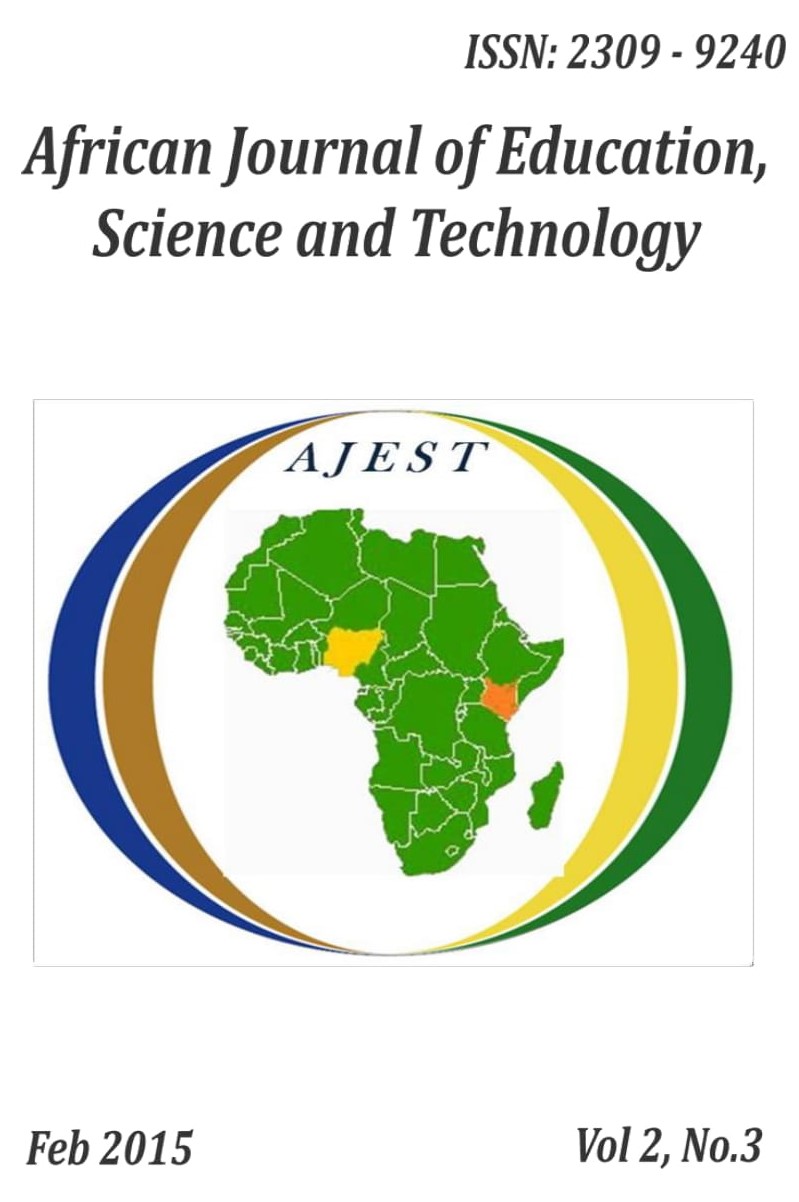Girl Child Abuse in Primary Schools: A Case Study of Lelmen Location, Baringo County, Kenya
##article.abstract##
This study examined home environment and girl childs‟ abuse in Primary schools of Baringo County, Lelmen location in Kenya. The study was prompted by the high rate of girl child dropout, especially due to early pregnancies and early marriages. This study was based on specific objective of examining: the economic factor that influence the girl child abuse and the social- political factors that promote girl child abuse in Lelmen location. The study was designed in a comparative paradigm using a descriptive and correlation Research design. Using a cross sectional survey design, data was collected from 119 pupils using a closed ended questionnaire 111 parents, 4 Head teachers, 2 District officers and 42 teachers were intervied. The of research revealed that poverty, forced labour, lack of skilled labour and poor background results into economic problems that cause girl child abuse in primary schools in Lelmen Location The study findings also indicated that political instability, cultural norms, genital mutilation, gender inequality, weak laws and inferiority complex are the socio-political causes of girl child abuse in primary schools in Baringo-county Lelmen location.
References
Annan, k (1998). Annual UN Convention on Child Abuse in Western Sudan. Review of UN Performance Washington DC; Young and Unwin Publishers
Bank o (1964) The sociology of education university of Leicester London press
Bitangaros (1994). Cultural Aspects that Impends Education of Girl: Ministry of Gender, Labor and Social Development Publication.
Burft (1997) The distribution and relation of educational ability; London press
Caltel et al (1972) Objective personality and motivation: press urban university of Illinois.
Cele et el (1982) The predictive validity of O level examination on the performance in science in science at A level in Uganda. un published ministry of education dissertation university :Pittsburg
Curry R.L (1962) The effects of socio-economic status on the scholastic achievement of the sixth grade children. British Journal of education psychology.
Curry (1992) The effects of social economic achievement of the sixth gradechildren‘s: British journal of the educational psychology vol 33 page 46-49.
Combs (1985) The world crisis in education. The review from eighties. Oxford university press
Dave R. L (1963) Identification and measurement of environmental process variables that are related to educational attainment. British Journal of educational attainment.
Dodha A (1988) Poverty Concepts and Measurement Poverty Monitoring UNICEF: Anker publishers Geniva. Farrant J.S (1982) Principles and practices in education. London oxford
Franzer (1989) Home environment and the school. London university press Kisembo: (1990) Home environment and school university of London press: London
Kitsikano et al (2001) Review of Human Rights in Uganda International Concern: Terp publisher Kampala Uganda.
Kofi Annani (1998) Annual UN Convention on Child Abuse in Western Sudan. Review of UN Performance Washington DC; Young and Unwin Publishers.
Lavin (1965) parents and learning. Brussels international academy of education. MCArther (1954) Beyond the classroom New York. Simmon and schester.
Musisi B (1983) A brief role of the relationship between socio-economic status and test performance among Uganda primary school. A comparative education review: vol. 3 pp 24-4
Newyork, UNDP Report (1980) Human Development Report. Oaks publication Boston.
Sen A. (1984) Poverty Reduction Strategies: ―A review‖ Paper Discussion. New Delhi India.
Shafter, Paul. (1994)―Relative speaking‖ in Resource Values Development. Charendon Press Oxford.


